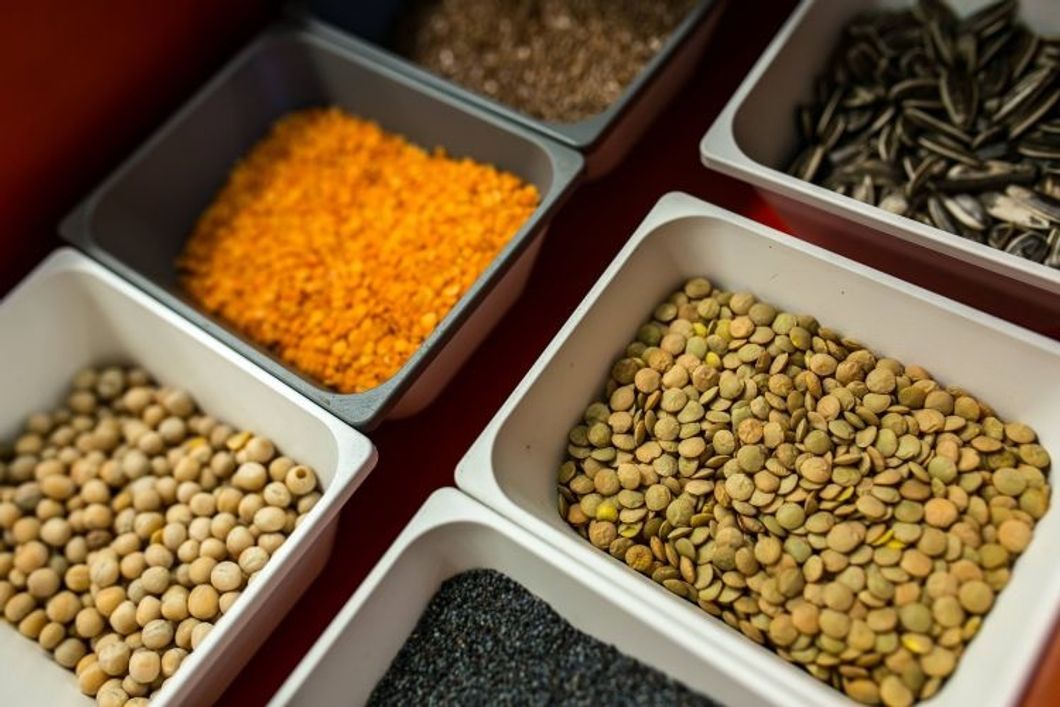This past New Year's, I was reached out to by a friend of mine who expressed his interest in going vegetarian as a New Year's resolution for 2021. He called to ask if I'd be willing to help him at all with his goals, as he knew I'd been vegetarian for several years and had very little regrets about it. I was flattered, and began thinking about things that are good to know for when you're first starting. If you've considered cutting meat or dairy or both out of your diet at any level, then I'd like to offer some tips and tricks for getting started below.
1. Don't feel like you need to do everything at once.
A common thing I see happen with people who are trying any new kind of diet is that they'll rush headlong into it, adopting every aspect of it at once only to quit a week later. They'll then write off the entire diet as impossible, choosing never again to give it any serious consideration.While going "cold turkey" (no pun intended) does work for some people when it comes to cutting out meat, it doesn't for everyone, and it's fine to roll back your consumption in a more staggered manner.For example, I cut out pork a year before I went fully vegetarian, and beef six months before, and that made the transition feel less overwhelming.
2. Cut out things you already don't have a lot.
There are certain meats that we have less than others, as everyone's preferences and dietary restrictions are different from one another. The same goes for diary and other animal products. A good way to think about starting the transition is by slashing things that you don't have a lot now anyway. For example, I didn't grow up drinking dairy milk at all, with my parents giving me almond or soy milk when it came to things like cereal and such; so when I did start modifying my diet, this was an easy thing for me to cut myself off from.
3. Realize that many foods you like are already vegetarian.
The image of a vegetarian for many people is someone who just eats salads all day, gaining very little in way of calories or even flavor out of their meals. But not only is it possible to get heartiness out of your meals without meat: you're probably already doing it. Rice, noodles, lentils and beans, potatoes, and fruit are all staples of many people's diets, and yet there's no meat to be found in any of them. Realize that cutting meat out may not require as dramatic a shift in your food intake as you might think.
4. Realize there are meat substitutes.
Say you like meat because of the flavor and texture, and the thought of a veggie burger makes you nauseous. That's okay! We're living in an unprecedented era in which there are many "imitation meats" out there that taste like the real thing. In addition to usual substitutes like tofu or tempeh, there are now brands like Beyond Meat that seek to simulate the texture and consistency of meat for vegans and vegetarians. Buy some stuff and experiement with what you like! I really enjoy the Italian sausage made by Tofurkey.
5. Be conscious of what you're missing out on.
The stereotype you hear about vegetarianism being unsustainable because it gives you no protein makes sense on the surface of it, but it really isn't true. You will deal with some deficiencies in cutting out meat, such as iron, protein, and B-12 to name three, but you can supplement this with vitamins and foods that are rich in those substances that do not contain meat. Make sure to do your research and think about what foods you'll want to eat or if you need vitamin supplements (as a side, I'd recommend getting them either way, as not every day will be perfect and you may miss out on daily nutrients sometimes).
6. Acknowledge it may be hard at first.
You may have some cheat meals initially. That's okay, it's part of the process. Over time it'll get easier and easier, and after a point you may no longer even desire meat altogether (for instance, I don't think I'd eat bacon or turkey even if I was given it and allowed myself to eat it now anyway). Those initial failings may be hard, but they're no reason to quit altogether. There's always tomorrow.
7. Buy some cookbooks!
Like with learning how to cook normally, buying vegetarian or vegan specific cookbooks can be a really good way to feel less overwhelmed. You can follow recipes to the tee at first and then over time get more used to experimenting and improvising using materials you see come up frequently. It also helps to be aware of cuisines which normally have a lot of meat-free food anyway, with Ethiopian and Indian dishes being good examples and potential templates for stuff to make. One I'll recommend is The Wild Vegetarian Cookbook by Steve Brill; it contains recipes split up by the season of the year.
Happy Eating!

















